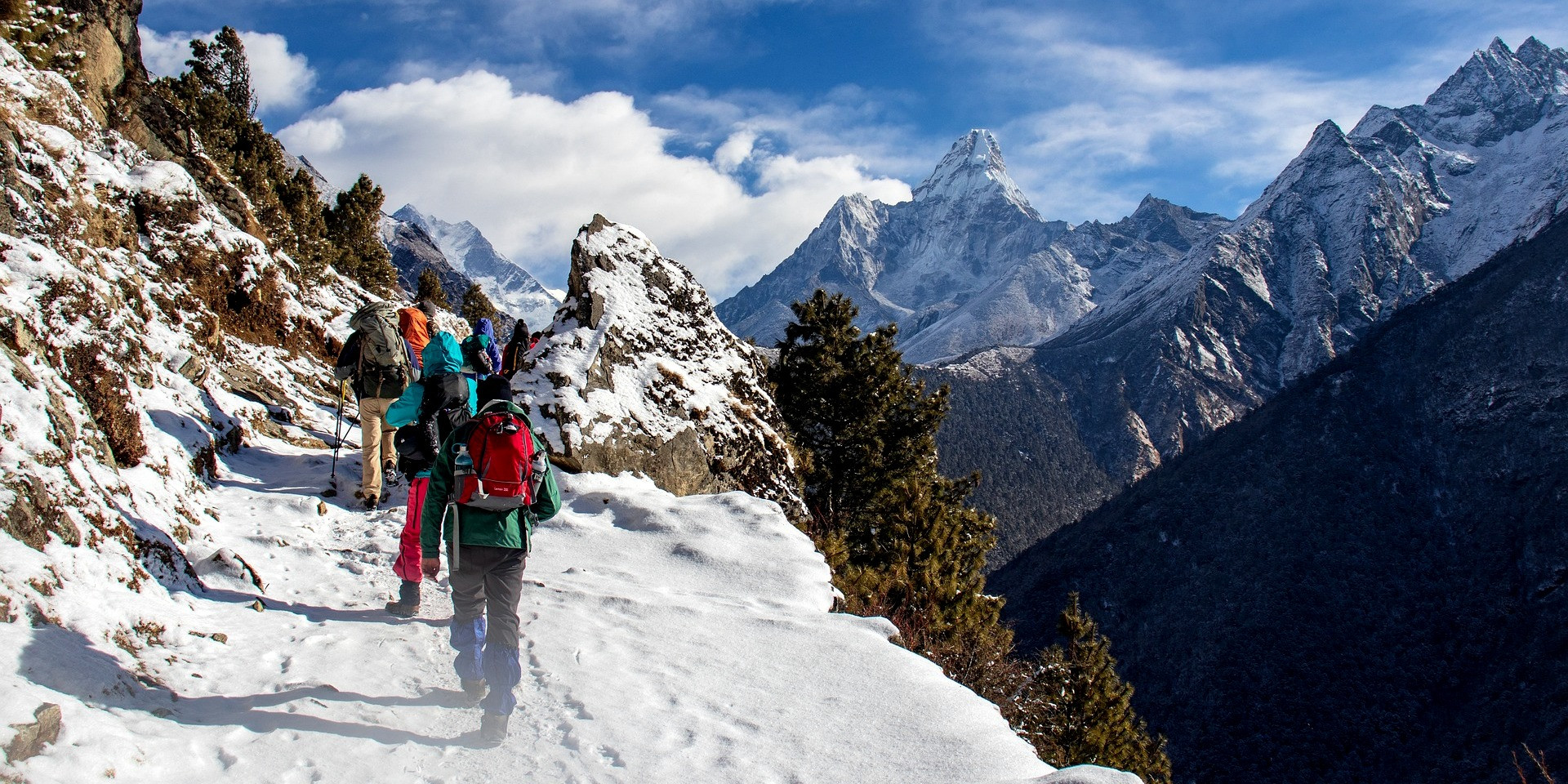Teahouse Trekking
Teahouse trekking is a popular style of trekking in Nepal, offering a unique and comfortable way to experience the Himalayan trails. This form of trekking is characterised by staying in teahouses or small lodges that are scattered along many of the popular trekking routes in Nepal. Here are some key aspects of teahouse trekking:
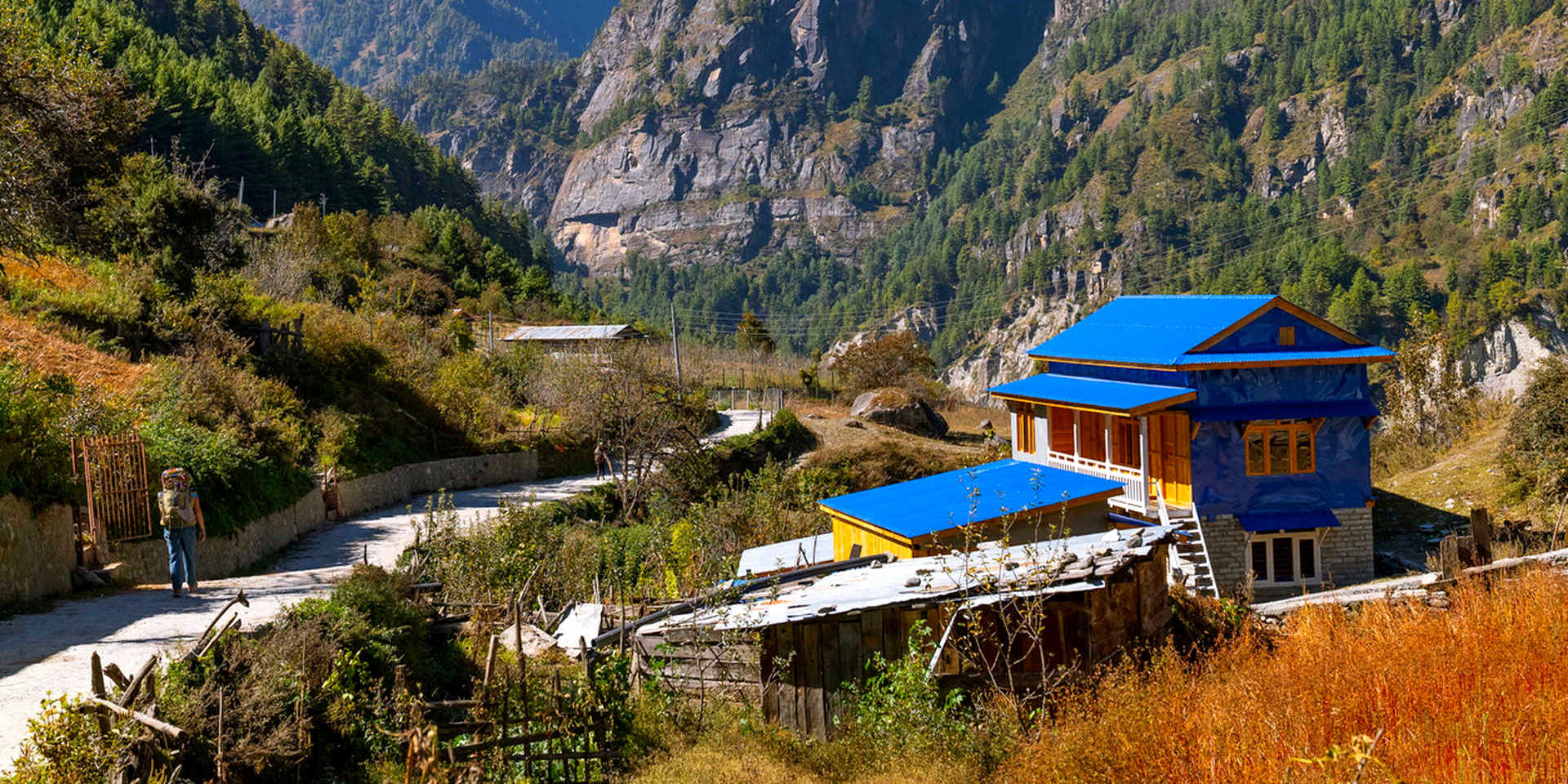
Characteristics of Teahouse Trekking
-
Accommodation: Teahouses are small lodges that provide basic accommodation facilities. They typically offer rooms with two single beds, shared bathrooms, and a communal dining area.
-
Food and Drink: Teahouses serve a variety of local and international dishes. The menu often includes traditional Nepali food like dal bhat (lentil soup, rice, and vegetables), as well as pasta, pizza, and fried rice. Hot beverages, like tea and coffee, are also available.
-
Cost-Effectiveness: Staying in teahouses can be quite economical as it eliminates the need to carry tents and cooking supplies. Meals and lodging are reasonably priced, making it an affordable option for most trekkers.
-
Cultural Interaction: Teahouse trekking offers a great opportunity to interact with the local people and learn about their culture and lifestyle. Many teahouses are family-run businesses, providing a homely and authentic experience.
-
Convenience: Teahouses are conveniently located at regular intervals along the trekking routes, making it easier to plan the trek and manage daily walking distances.
-
Accessibility: This form of trekking is suitable for most people, including beginners, as it requires less preparation and equipment compared to camping treks.
Popular Teahouse Trekking Routes
-
Everest Base Camp Trek: A journey to the base of the world’s highest peak, with teahouses offering spectacular views of the Himalayas.
-
Annapurna Circuit Trek: Circumnavigates the Annapurna massif, with teahouses located in picturesque villages and offering diverse cultural experiences.
-
Langtang Valley Trek: A shorter trek near Kathmandu, featuring teahouses in the beautiful Langtang Valley with its unique landscapes and culture.
-
Ghorepani Poon Hill Trek: Known for its breathtaking sunrise views, this trek has a well-established network of comfortable teahouses.
-
Manaslu Circuit Trek: a less crowded trek with newly built teahouses, offering a more remote experience in the Himalayas.
Teahouse trekking in Nepal is not just about the journey through the mountains; it's also about the warm hospitality, cultural richness, and simple yet fulfilling lifestyle of the mountain communities. This makes it an ideal choice for those looking to experience the Himalayas with a touch of comfort and local flavour.
Camping Trekking
Teahouse trekking is a popular style of trekking in Nepal, offering a unique and comfortable way to experience the Himalayan trails. This form of trekking is characterised by staying in teahouses or small lodges that are scattered along many of the popular trekking routes in Nepal. Here are some key aspects of teahouse trekking:
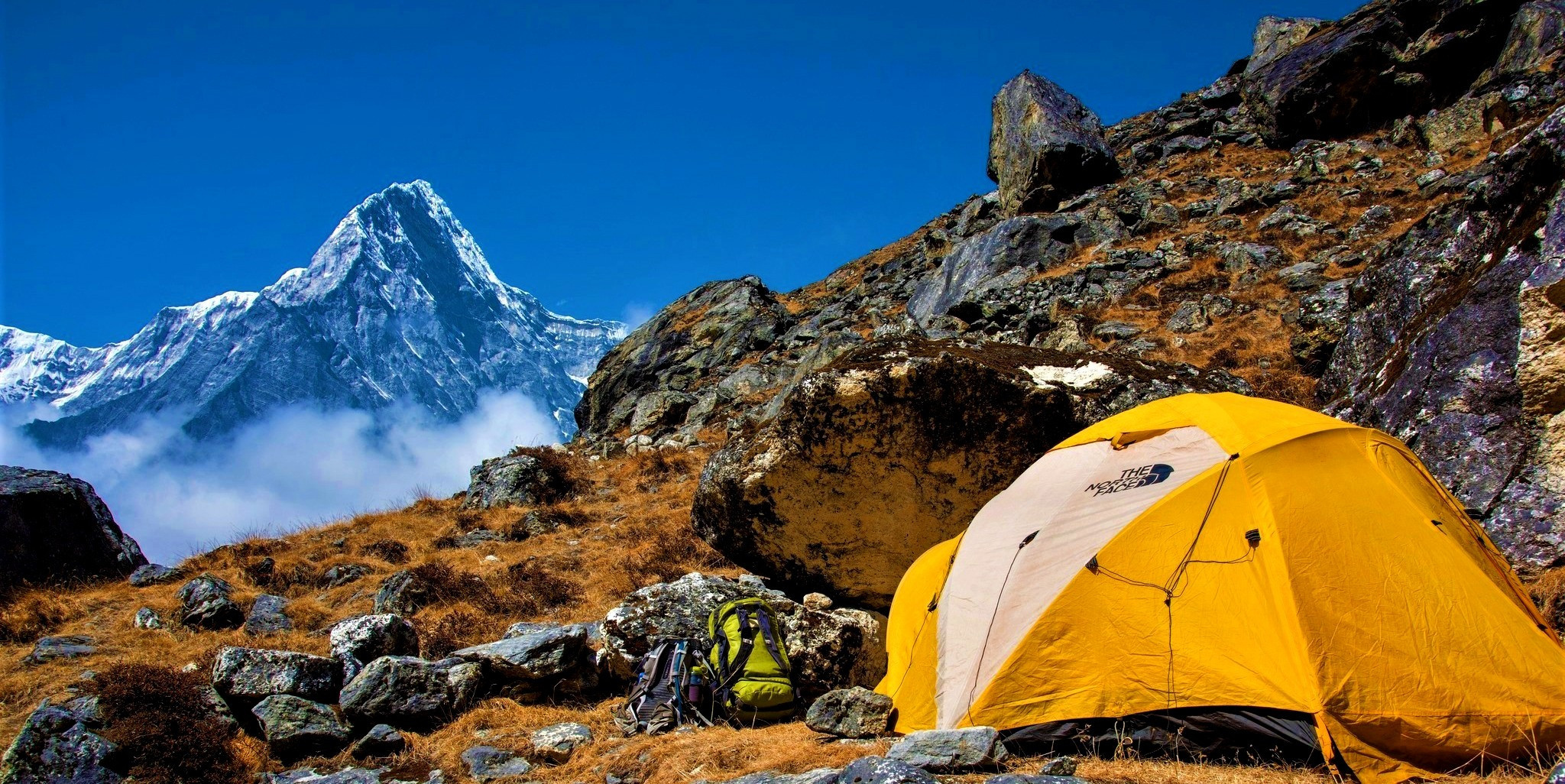
Characteristics of Teahouse Trekking
-
Accommodation: Teahouses are small lodges that provide basic accommodation facilities. They typically offer rooms with two single beds, shared bathrooms, and a communal dining area.
-
Food and Drink: Teahouses serve a variety of local and international dishes. The menu often includes traditional Nepali food like dal bhat (lentil soup, rice, and vegetables), as well as pasta, pizza, and fried rice. Hot beverages, like tea and coffee, are also available.
-
Cost-Effectiveness: Staying in teahouses can be quite economical as it eliminates the need to carry tents and cooking supplies. Meals and lodging are reasonably priced, making it an affordable option for most trekkers.
-
Cultural Interaction: Teahouse trekking offers a great opportunity to interact with the local people and learn about their culture and lifestyle. Many teahouses are family-run businesses, providing a homely and authentic experience.
-
Convenience: Teahouses are conveniently located at regular intervals along the trekking routes, making it easier to plan the trek and manage daily walking distances.
-
Accessibility: This form of trekking is suitable for most people, including beginners, as it requires less preparation and equipment compared to camping treks.
Popular Teahouse Trekking Routes
-
Everest Base Camp Trek: A journey to the base of the world’s highest peak, with teahouses offering spectacular views of the Himalayas.
-
Annapurna Circuit Trek: Circumnavigates the Annapurna massif, with teahouses located in picturesque villages and offering diverse cultural experiences.
-
Langtang Valley Trek: A shorter trek near Kathmandu, featuring teahouses in the beautiful Langtang valley with its unique landscapes and culture.
-
Ghorepani Poon Hill Trek: Known for its breathtaking sunrise views, this trek has a well-established network of comfortable teahouses.
-
Manaslu Circuit Trek: a less crowded trek with newly built teahouses, offering a more remote experience in the Himalayas.
Camping and trekking in Nepal are ideal for those who are looking for a more rugged and adventurous experience. It provides an opportunity to connect deeply with nature, explore uncharted territories, and experience the wilderness of the Himalayas in a profound way. This type of trekking requires good physical fitness, a sense of adventure, and a willingness to embrace the simplicity of outdoor living.
Guided Trekking
Guided trekking in Nepal is a popular choice for many trekkers, especially those who are new to the region or prefer a more structured and secure trekking experience. In guided trekking, a professional guide accompanies the trekking group, offering valuable insights, assistance, and expertise throughout the journey. Here are some key aspects of guided trekking in Nepal:
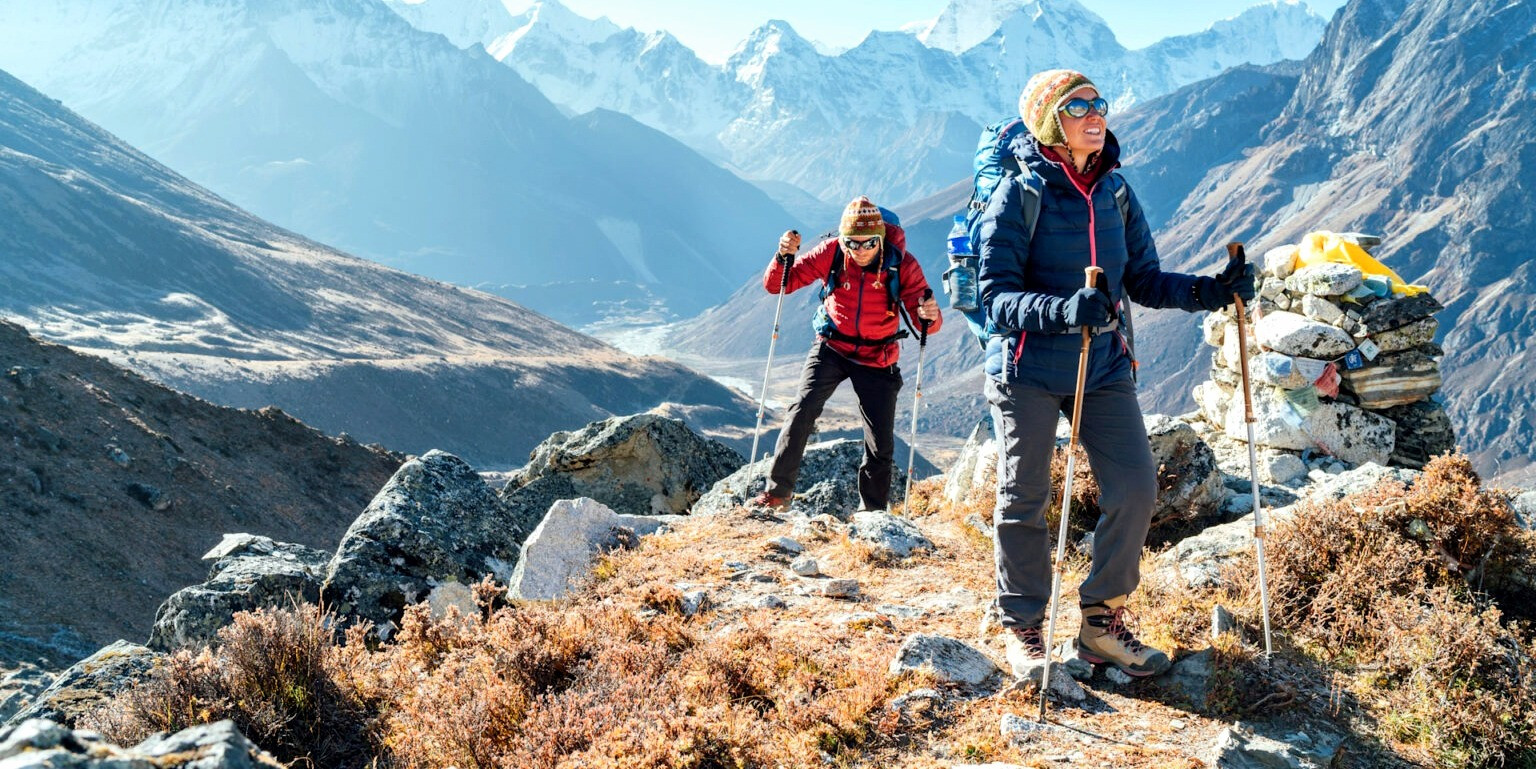
Characteristics of Guided Trekking
-
Professional Guidance: A knowledgeable guide leads the way, ensuring safe navigation through the trails. They are trained in first aid and are equipped to handle emergencies.
-
Cultural Insight: Guides often provide in-depth information about the local culture, traditions, and history, enriching the trekking experience.
-
Language and Communication: Guides usually speak English and the local language, facilitating effective communication with locals and enhancing the overall experience.
-
Itinerary Planning: Guided treks come with pre-planned itineraries, taking the hassle out of planning and logistics. The guide ensures the trek runs smoothly and according to schedule.
-
Safety and Security: Having a guide enhances safety, especially in remote areas or challenging trails. They are familiar with the terrain and weather conditions and know how to respond to any situation that may arise.
-
Flexibility: While the itinerary is pre-planned, there is often flexibility to accommodate the needs and preferences of trekkers, within reason.
-
Support Local Economy: Hiring a local guide supports the local economy and provides trekkers with an authentic insight into the Nepalese way of life.
Popular Guided Treks in Nepal
-
Everest Base Camp Trek: A guided trek to the base of the highest mountain in the world, passing through Sherpa villages and offering stunning views of the Himalayas.
-
Annapurna Base Camp Trek: This guided trek offers a mix of spectacular mountain views, dense rhododendron forests, and a glimpse into local Gurung and Magar cultures.
-
Langtang Valley Trek: a relatively short trek near Kathmandu, offering a great introduction to Himalayan landscapes and Tamang culture.
-
Manaslu Circuit Trek: A guided trek around the eighth-highest mountain in the world, known for its remote beauty and cultural diversity.
-
Gokyo Lakes Trek: Explore the beautiful Gokyo Valley with its emerald lakes and panoramic views, including an ascent of Gokyo Ri.
Guided trekking is ideal for those who wish to have a stress-free trekking experience with the added benefit of learning about the region from a local perspective. It’s especially recommended for challenging treks or for those trekking in Nepal for the first time. With a guide, trekkers can focus on enjoying the journey and immersing themselves in the stunning natural beauty and rich culture of Nepal.
Independent Trekking
Independent trekking in Nepal is an option for more experienced trekkers who prefer a sense of adventure and autonomy in planning and executing their trek. This style of trekking involves navigating the trails without the assistance of a professional guide or porter, offering a more personal and self-reliant experience. Here are some key aspects of independent trekking in Nepal:
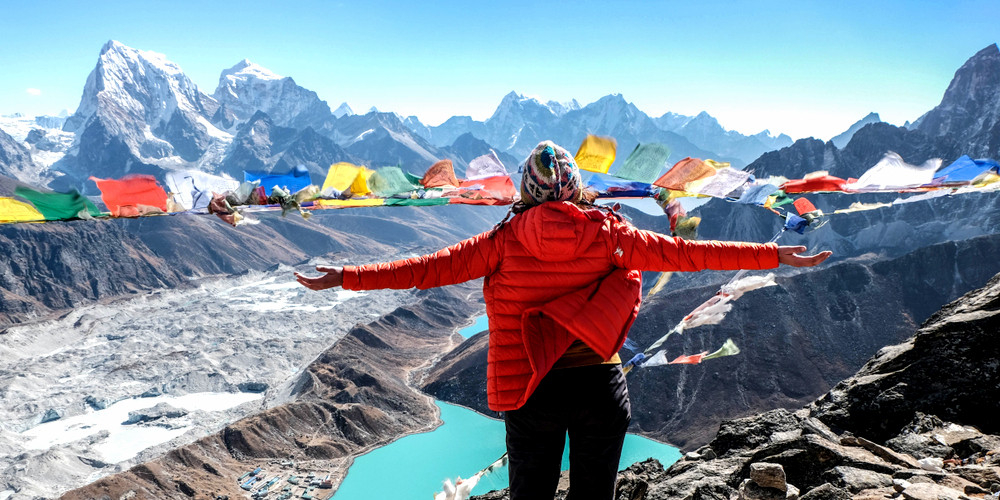
Characteristics of Independent Trekking
-
Self-Navigation: Trekkers navigate the trails using maps, guidebooks, or GPS. It requires good orientation skills and some familiarity with the trekking route.
-
Flexibility in Itinerary: Independent trekkers have complete control over their itinerary, including where to stop, how long to trek each day, and any side trips or deviations from the main path.
-
Personal Responsibility: Trekkers are responsible for all aspects of the trek, including accommodation, food, safety, and health. This requires thorough preparation and an understanding of the trekking area.
-
Cost-Effectiveness: Trekking independently can be more budget-friendly, as it eliminates the cost of hiring guides and porters.
-
Cultural Immersion: Travelling independently can lead to more organic interactions with local people and a deeper cultural immersion.
-
Challenge and Satisfaction: Independent trekking offers a sense of achievement and self-sufficiency. It can be more challenging but also more rewarding.
Considerations for Independent Trekking
-
Permits: Trekkers need to arrange all necessary permits themselves. Some areas in Nepal require a TIMS card (Trekkers' Information Management System) and a National Park Entry Permit.
-
Safety: Without a guide, trekkers must be more vigilant about personal safety and health issues and be prepared for emergencies.
-
Local Knowledge: It’s important to have some knowledge of local customs, language, and etiquette.
-
Equipment: Independent trekkers need to carry their own gear, including appropriate clothing, navigation tools, and possibly a first-aid kit.
Popular Routes for Independent Trekking
-
Annapurna Circuit Trek: A classic trek that offers a variety of landscapes, from subtropical forests to high mountain passes.
-
Langtang Valley Trek: Accessible from Kathmandu, this trek offers a mix of mountain scenery and cultural experiences.
-
Ghorepani Poon Hill Trek: a shorter and relatively easy trek, ideal for beginners or those with limited time.
-
Everest Base Camp Trek: A well-trodden path leading to the base of the highest mountain in the world, with clear trails and ample facilities.
-
Manaslu Circuit Trek: More remote and less crowded, offering a challenging but rewarding experience.
Independent trekking in Nepal suits those who are confident in their trekking abilities, enjoy planning their own journey, and seek a more personal adventure. However, it requires good preparation, respect for local cultures and environments, and an understanding of the potential risks involved. With the right preparation and mindset, independent trekking can be an incredibly fulfilling way to explore the natural beauty and rich cultural tapestry of Nepal.
Luxury Trekking
Luxury trekking in Nepal offers a unique combination of adventure and comfort, catering to those who wish to experience the stunning beauty of the Himalayas without forgoing the comforts and amenities of high-end travel. This type of trekking experience is designed to provide trekkers with a more comfortable and luxurious journey through Nepal's famous trekking routes. Here are some key aspects of luxury trekking in Nepal:
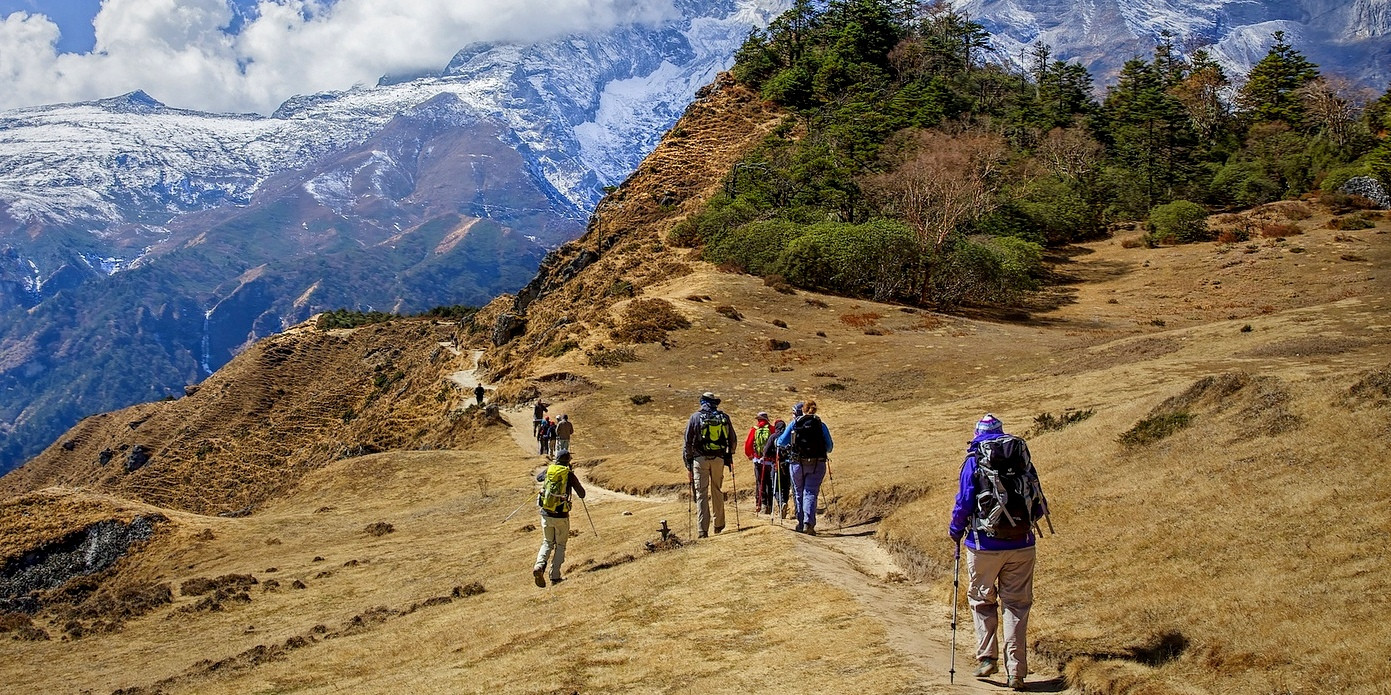
Characteristics of Luxury Trekking
-
Upscale Accommodations: Unlike traditional teahouse or camping treks, luxury trekking involves staying in high-end lodges or boutique hotels that offer superior comfort, often with amenities like attached bathrooms, comfortable bedding, and heating facilities.
-
Gourmet Dining: Luxury treks often include a variety of dining options, with menus featuring both local and international cuisine prepared by professional chefs and a selection of fine wines and other beverages.
-
Smaller Groups: These treks typically cater to smaller groups or private parties, ensuring personalised attention and a more intimate trekking experience.
-
Professional Support: Luxury treks are fully guided by experienced and knowledgeable guides and supported by a dedicated team, ensuring a smooth and well-organized journey.
-
Additional Services: Extra services such as porters to carry luggage, in-route transportation by private vehicles or even helicopters for certain sections, and spa treatments at the end of trekking days are often part of the luxury trekking experience.
-
Scenic Routes with Comfort: While encompassing some of the most scenic routes in the Himalayas, these treks are designed to be less physically demanding, with shorter daily hiking durations and more rest days.
Popular Luxury Trekking Routes
-
Everest Base Camp Luxury Trek: Experience the classic Everest Base Camp route while enjoying the highest standard of accommodation and services available in the Khumbu region.
-
Annapurna Luxury Lodge Trek: Trek through the beautiful Annapurna region with overnight stays in the finest lodges, offering spectacular views and excellent services.
-
Langtang Valley Luxury Trek: Explore the Langtang region with a touch of luxury, enjoying comfortable lodges and the stunning natural beauty of the valley.
-
Ghorepani Poon Hill Luxury Trek: a less strenuous trek with magnificent Annapurna views, perfect for those who want a short but luxurious trekking experience.
-
Upper Mustang Luxury Trek: Discover the hidden kingdom of Mustang with a blend of adventure and comfort, staying in the best available accommodations.
Luxury trekking in Nepal is ideal for those who want to enjoy the splendour of the Himalayas without compromising on comfort. It provides an excellent option for travellers who are looking for a high-end trekking experience, combining the thrill of adventure with the pleasures of luxury travel.
Cultural Trekking
Cultural trekking in Nepal is a unique form of trekking that focuses not just on the natural beauty of the Himalayas but also on the rich cultural heritage, traditions, and lifestyle of the Nepalese people. This type of trekking is ideal for those who are interested in immersing themselves in local cultures and understanding the social fabric of the regions they travel through. Here are some key aspects of cultural trekking in Nepal:
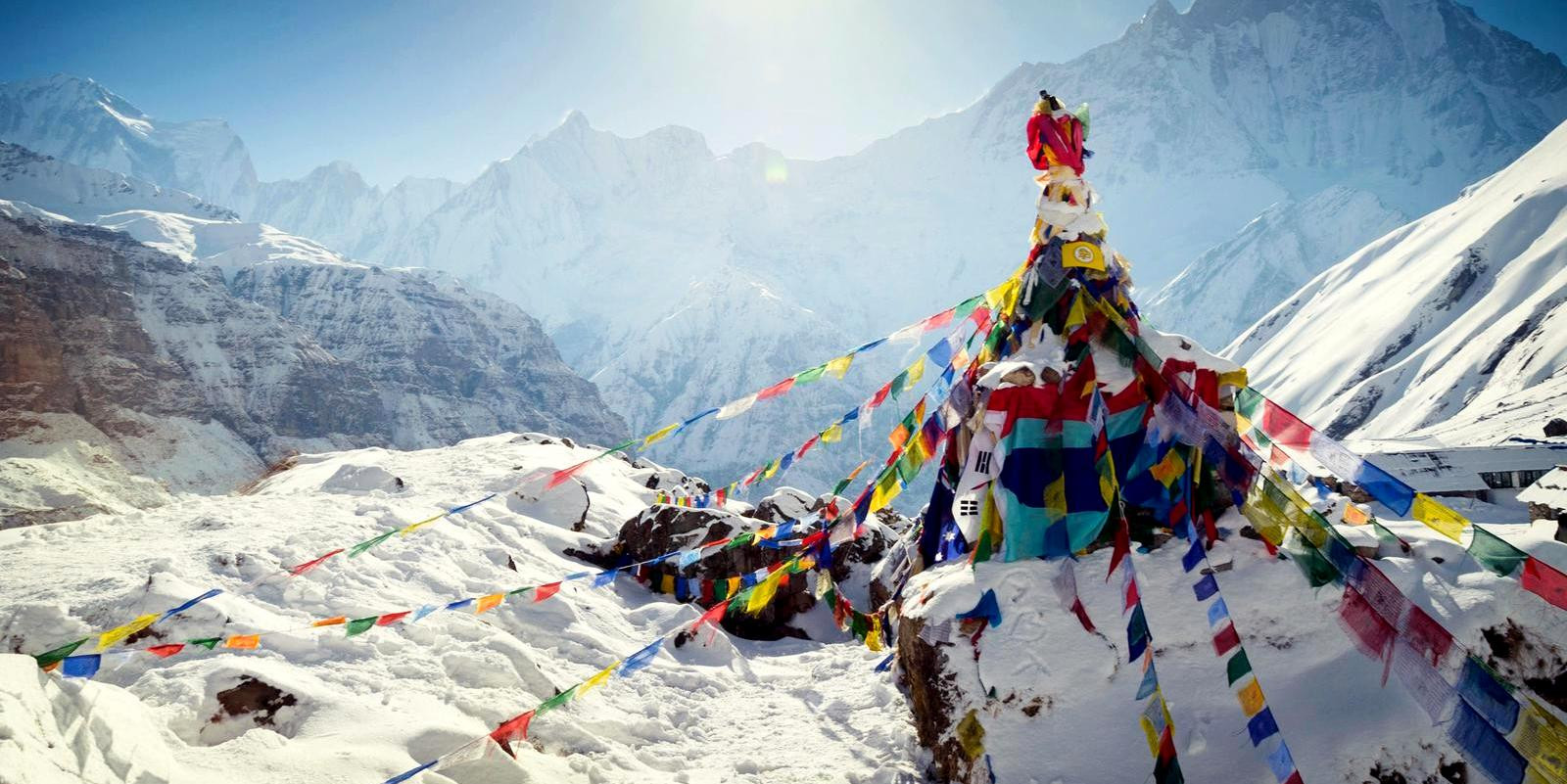
Characteristics of Cultural Trekking
-
Interaction with Local Communities: Cultural treks often involve visiting local villages, homes, and monasteries, allowing trekkers to interact closely with the local people and observe their daily lives.
-
Understanding Traditions and Customs: Trekkers get an opportunity to learn about the traditions, customs, and religious practices of various ethnic groups in Nepal.
-
Heritage Sites: These treks often include visits to UNESCO World Heritage Sites, ancient temples, monasteries, and historical landmarks.
-
Festivals and Celebrations: Timing a trek to coincide with local festivals can be a highlight, providing a colourful and vibrant insight into the cultural celebrations of the region.
-
Traditional Accommodation and Cuisine: Staying in traditional teahouses or homestays and enjoying local cuisines add to the authentic cultural experience.
-
Learning Opportunities: Many cultural treks include opportunities to learn about local crafts, cooking, or even language.
Popular Cultural Trekking Routes
-
Upper Mustang Trek: Explore the former kingdom of Lo, known for its Tibetan-influenced culture, ancient monasteries, and unique semi-arid landscapes.
-
Tamang Heritage Trail: Discover the culture of the Tamang people, with insights into their Tibetan-derivative traditions, architecture, and crafts.
-
Ghorepani Poon Hill Trek: While offering spectacular mountain views, this trek also passes through villages of the Gurung and Magar communities, known for their unique cultures.
-
Langtang Valley Trek: Experience the unique culture of the Tamang community, influenced by Tibetan Buddhism, set against the backdrop of the beautiful Langtang Valley.
-
Manaslu Circuit Trek: Circumnavigate the eighth-highest peak in the world while experiencing the rich culture of the Nubri and Tsum valleys, home to Tibetan Buddhists.
Cultural trekking in Nepal is more than just a physical journey; it's a deep dive into the heart and soul of Nepal's diverse ethnic communities. This type of trekking appeals to those who are looking to understand and appreciate the cultural dimensions of the places they visit, forming deeper, more meaningful connections with the land and its people.
Adventure Trekking
Adventure trekking in Nepal is for those seeking an exhilarating and challenging experience in the Himalayas. This form of trekking goes beyond traditional paths, combining the classic trekking experience with elements of adventure and exploration. Adventure trekking often includes tackling more rugged terrain, higher altitudes, and remote regions. Here are some key aspects of adventure trekking in Nepal:
Characteristics of Adventure Trekking
-
Challenging Terrains: Adventure treks often involve navigating through remote and less-trodden paths, steep climbs, high passes, and possibly glacier crossings.
-
High-Altitude Treks: These treks reach higher elevations, requiring good acclimatisation and physical fitness. The risks of altitude sickness are higher, and trekkers need to be well-prepared.
-
Combination with Other Activities: Adventure trekking can be combined with other activities like peak climbing, camping, and even rafting or jungle safaris.
-
Longer Duration: Adventure treks are generally longer, taking several weeks to complete, and require good stamina and endurance.
-
Wilderness Experience: These treks offer an authentic wilderness experience, away from the more popular and crowded trails.
-
Exposure to Diverse Environments: From lush forests to arid high-altitude deserts, adventure treks expose trekkers to a wide range of environments and ecosystems.
Popular Adventure Trekking Routes
-
Everest Three Passes Trek: This trek navigates through three high passes—Kongma La, Cho La, and Renjo La—providing a comprehensive and challenging Everest region experience.
-
Manaslu Circuit Trek: A less crowded alternative to the Annapurna Circuit, this trek circles the Manaslu mountain and crosses the Larkya La Pass.
-
Dhaulagiri Circuit Trek: A challenging and remote circuit that takes trekkers around the seventh-highest mountain in the world, involving glacier crossings and high-altitude trekking.
-
Makalu Base Camp Trek: A trek through one of the most remote and untouched areas in Nepal, leading to the base camp of the fifth-highest mountain in the world.
-
Upper Dolpo Trek: A journey into one of the most isolated regions of Nepal, known for its rugged beauty, ancient monasteries, and the unique culture of the Dolpo people.
Adventure trekking in Nepal is suited for those who have a strong sense of adventure, a high level of physical fitness, and prior trekking or mountaineering experience. These treks offer a more intense and immersive experience in the Himalayas, providing trekkers with a sense of accomplishment and memories that last a lifetime.
Eco-Trekking
Eco-trekking in Nepal is a form of trekking that emphasises responsible travel practices, focusing on minimising environmental impact and promoting sustainable tourism. This approach to trekking is increasingly popular among travellers who are conscious of their ecological footprint and keen to support conservation efforts. Here are some key aspects of eco-trekking in Nepal:
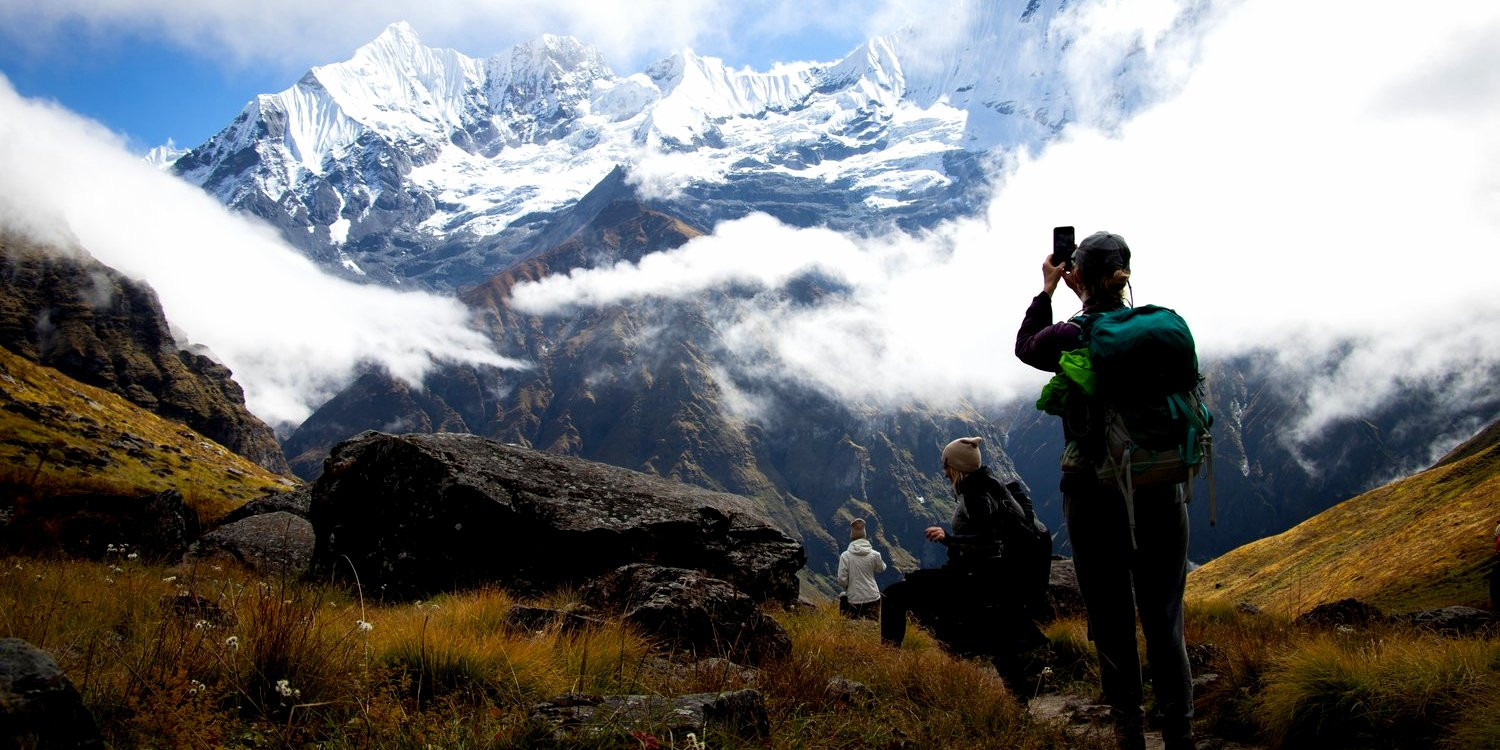
Characteristics of Eco-Trekking
-
Sustainable Practices: Eco-trekking involves using resources in a way that minimises environmental damage. This includes proper waste disposal, using renewable energy sources when available, and reducing the use of plastic.
-
Supporting Local Communities: Eco-trekking often involves staying in locally-owned lodges or homestays, purchasing local products, and engaging local guides and porters, thereby contributing to the local economy and community empowerment.
-
Conservation Awareness: These treks raise awareness about conservation issues in the regions visited, such as deforestation, wildlife protection, and cultural preservation.
-
Small Group Size: Eco-treks are typically conducted in smaller groups to reduce the impact on the environment and local communities.
-
Educational Component: Trekkers often learn about the local environment, culture, and sustainability efforts. This can include information sessions, interaction with conservationists, and visits to eco-projects.
-
Low-Impact Accommodations: Accommodations are usually eco-friendly, focusing on minimising waste, conserving water, and often using traditional building methods and materials.
Popular Eco-Trekking Routes
-
Annapurna Sanctuary Eco-Trek: Explore the Annapurna region while staying in eco-lodges and learning about local conservation efforts.
-
Langtang Valley Eco-Trek: Trek through the beautiful Langtang region with a focus on understanding the local ecosystem and supporting community-run projects.
-
Everest Base Camp Eco-Trek: Experience the classic EBC trek with a focus on eco-friendly practices and supporting Sherpa communities.
-
Ghorepani Poon Hill Eco-Trek: A shorter trek that offers cultural insights and sustainable trekking practices in the Annapurna region
-
Manaslu Circuit Eco-Trek: Venture around the Manaslu region while engaging in practices that support environmental sustainability and local livelihoods.
Eco-trekking in Nepal is ideal for those who are not only passionate about exploring the natural beauty and cultural richness of the Himalayas but also committed to preserving it for future generations. By choosing eco-trekking, travellers can enjoy a fulfilling trekking experience while making a positive impact on the environment and the local communities.
Off-the-Beaten-Path Trekking
Off-the-beaten-path trekking in Nepal refers to treks that are less frequented by tourists and lead through remote and often unspoiled regions of the country. These treks offer a more solitary experience, away from the crowded and popular trails, allowing trekkers to delve into the pristine natural beauty and authentic local cultures of Nepal. Here are some key aspects of off-the-beaten-path trekking:
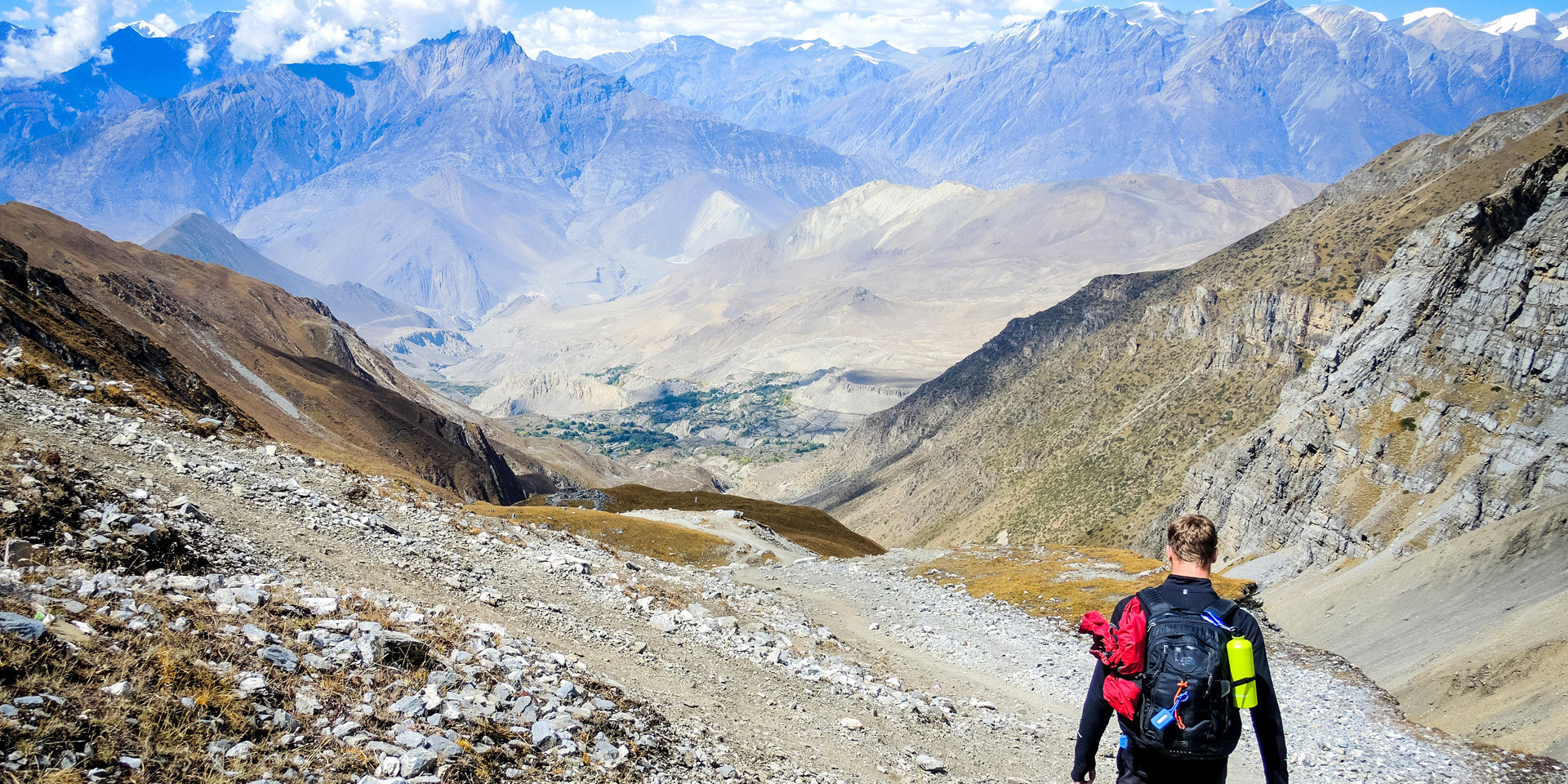
Characteristics of Off-the-Beaten-Path Trekking
-
Remote Locations: These treks venture into less-visited areas, often requiring longer travel times to reach the trailhead.
-
Rich Cultural Experiences: Trekking in these remote areas provides opportunities to experience the untouched cultures and lifestyles of various ethnic groups in Nepal.
-
Diverse Landscapes: These routes showcase the diverse landscapes of Nepal, from lush forests and wild rivers to high-altitude deserts and snowy peaks.
-
Solitude and Peace: Away from the popular routes, these treks offer a sense of solitude and peace, allowing trekkers to connect more deeply with nature.
-
Basic Facilities: Accommodations and facilities are often more basic in these areas, offering a more rustic and authentic trekking experience.
-
Wildlife Encounters: These areas can provide opportunities for wildlife sightings, as they are less disturbed and closer to natural habitats.
Popular Off-the-Beaten-Path Trekking Routes
-
Upper Dolpo Trek: Explore the remote and mystical region of Dolpo, known for its rugged landscapes, ancient monasteries, and unique Tibetan-influenced culture.
-
Makalu Base Camp Trek: A challenging trek to the base camp of the world's fifth-highest mountain, passing through diverse landscapes and remote villages.
-
Kanchenjunga Base Camp Trek: Venture to the base camps of the world’s third-highest mountain, a trek that takes you through remote terrain in eastern Nepal.
-
Nar Phu Valley Trek: Discover the hidden valleys of Nar and Phu, with their unique Tibetan culture, ancient monasteries, and stunning mountain views.
-
Rara Lake Trek: Visit Nepal’s largest lake, Rara, in the remote Mugu district, known for its alpine scenery, clear waters, and the Rara National Park.
-
Rolwaling Valley Trek: A hidden gem that offers a challenging trek through one of the most remote areas of Nepal, including views of Gaurishankar and Melungtse peaks.
Off-the-beaten-path trekking in Nepal appeals to those looking for a more adventurous and less commercialised trekking experience. These treks not only challenge trekkers physically but also offer rich rewards in terms of natural beauty, cultural encounters, and a deeper understanding of the diverse and resilient spirit of Nepal.
Tips for Different Types of Trekking in Nepal
Here are some overall tips that are useful for various types of trekking in Nepal, whether you're embarking on a teahouse trek, a remote camping adventure, or any other trekking experience:
General Preparation
-
Physical Fitness: Depending on the trek's difficulty, engage in pre-trek training that includes hiking, cardiovascular exercises, and strength training.
-
Research and Planning: Thoroughly research the trekking route, understand the difficulty level, and plan your itinerary accordingly.
Health and Safety
-
Altitude Sickness: Educate yourself about altitude sickness. Ascend slowly, and include acclimatisation days in your itinerary.
-
Travel Insurance: Ensure you have comprehensive travel insurance that covers high-altitude trekking and emergency evacuation.
-
First Aid and Medication: Carry a basic first aid kit and any personal medications. Include items for altitude sickness, diarrhoea, and basic injuries.
Gear and Packing
-
Appropriate Gear: Invest in good-quality trekking boots, a comfortable backpack, and suitable trekking attire. Layering is key to handling varying temperatures.
-
Packing Essentials: Pack light, but don't forget essentials like a sleeping bag (for certain treks), water purification tablets or filters, sunscreen, hats, and sunglasses.
On the Trek
-
Stay Hydrated and Nourished: Drink plenty of water and eat balanced meals to maintain energy levels.
-
Respect Local Culture: Be respectful of local customs and traditions. Dress modestly, and always ask permission before taking photos of people.
-
Leave No Trace: Be environmentally responsible. Dispose of waste properly and minimise your ecological footprint.
Post-Trek
-
Recovery: Allow time for your body to recover, especially after strenuous treks.
-
Feedback and Sharing: Share your experience and feedback with the trekking company or community, and consider contributing to local conservation or community projects if possible.
Remember, every trek in Nepal is unique, so tailor these tips to the specific nature of your trek and your personal needs. Happy trekking!
Best Time for Types of Trekking in Nepal
The best time for trekking in Nepal is typically during the spring and autumn seasons, each offering distinct advantages:
Spring (March to May)
-
Weather: Spring brings warmer weather, with temperatures gradually rising. The days are sunny and pleasant, making them ideal for trekking.
-
Visibility: The visibility is generally good, although there can be some hazy days in the lower regions.
-
Nature: This season witnesses the blooming of wildflowers, especially rhododendrons, adding spectacular colours to the hillsides.
-
Crowds: Popular trekking routes like the Everest Base Camp and Annapurna Circuit can get quite crowded during this peak season.
Autumn (September to November)
-
Weather: Autumn is characterised by clear skies and stable weather, with moderate temperatures. This is the most popular trekking season in Nepal.
-
Visibility: The visibility is excellent, offering crisp and clear views of the Himalayan ranges.
-
Nature: The landscapes are lush and green following the monsoon season.
-
Festivals: Autumn is also a time for major Nepalese festivals like Dashain and Tihar, providing a great cultural experience.
Other Seasons
-
Summer/Monsoon (June to August): This season is less ideal for trekking due to heavy rains, slippery trails, leeches, and obscured mountain views. However, rain-shadow areas like Upper Mustang and Dolpo can be good options as they receive significantly less rainfall.
-
Winter (December to February): Winter trekking is possible, especially at lower altitudes. The weather is colder, and higher regions can be challenging due to snow and ice. However, the trails are less crowded, and the views can be stunning with clear skies.
Choosing the right time for trekking in Nepal depends on the trekker's preferences for weather, visibility, nature, and crowd levels. Each season offers a unique experience, showcasing Nepal’s diverse beauty and charm.
Trekking in Nepal is a unique experience that suits a variety of interests and skill levels. Every trek, from the well-known Everest Base Camp Trek to the remote paths of the Dolpo Region, provides a different combination of spectacular scenery, fascinating cultural experiences, and strenuous challenges. Nepal's varied landscapes offer the ideal setting, whether you're looking for the tranquilly of strolling through lush forests and charming towns in the Annapurna Circuit or the excitement of scaling high-altitude hills in the Three Hills Trek.
Hiking in the nation has a deeper cultural component because of the trekking routes, which not only display the grandeur of the Himalayas but also provide a glimpse into the lives and customs of the local populace. Nepal offers a diverse range of hiking experiences for all skill levels, from easy strolls along the Ghorepani Poon Hill Trek to the strenuous demands of the Kanchenjunga Base Camp Trek.
Furthermore, the spring and fall seasons are ideal for these treks since they showcase Nepal's natural beauty in all its splendour, from rhododendron flowers to unobstructed, expansive vistas of the mountains. Nepal is a popular trekking destination that continues to enthral and challenge travellers from all over the world. In addition to its stunning natural surroundings, Nepal is known for its kind and resilient populace.
Whether you are drawn by the allure of the world's highest peaks or the desire to immerse yourself in a rich cultural tapestry, trekking in Nepal offers an unforgettable journey and an unparalleled opportunity to connect with nature and yourself.
FAQs for Types of Trekking in Nepal
Q. What are the best seasons for trekking in Nepal?
A. The best seasons for trekking in Nepal are during the spring (March to May) and autumn (September to November). These months offer clear skies, moderate temperatures, and the best views. Some treks, especially in lower altitudes, can also be done in winter (December to February).
Q. Do I need a guide for trekking in Nepal?
A. While some treks can be done independently, it's generally recommended to hire a guide, especially for remote or challenging treks. Guides ensure safety, help with navigation, and enhance the cultural experience by providing local insights.
Q. What is the difficulty level of treks in Nepal?
A. Nepal offers treks of varying difficulty levels. Some, like the Ghorepani Poon Hill Trek, are suitable for beginners, while others, such as the Everest Three Passes Trek, are challenging and require good physical fitness and acclimatisation to high altitudes.
Q. Do I need special permits for trekking in Nepal?
A. Yes, most trekking routes in Nepal require permits. The type of permit depends on the region; for example, the Annapurna and Everest regions require a TIMS card and a National Park permit, while restricted areas like Upper Mustang require special restricted area permits.
Q. What should I pack for a trek in Nepal?
A. Packing depends on the trek's duration, difficulty, and season. Essentials include good hiking boots, warm clothing, a first-aid kit, a sleeping bag, a map, and a water purification system. It's also important to pack light and efficiently.
Q. How do I prepare for high altitude trekking?
A. To prepare for high altitude, focus on physical fitness, acclimatize properly during the trek, stay hydrated, eat a high-calorie diet, and avoid alcohol. It's also important to understand the symptoms of altitude sickness.
Q. Can I do solo trekking in Nepal?
A. Solo trekking is possible in many regions, but it's important to be well-prepared, informed about the route, and aware of the risks. Some remote areas, however, require trekkers to be accompanied by a guide or porter.
Q. How long do treks in Nepal typically last?
A. Treks in Nepal can range from short 3-5 day treks to longer expeditions lasting over three weeks. The duration depends on the trekking route and your pace.
Q. Are there any cultural etiquettes I should be aware of while trekking?
A. Yes, it's important to respect local customs and traditions. This includes dressing modestly, taking permission before photographing people, respecting religious sites, and being eco-conscious.
Q. How much does trekking in Nepal cost?
A. The cost varies depending on the trek, duration, type of accommodation, and whether you hire guides or porters. Budget treks can cost as little as $20-30 per day, while more luxurious treks can cost significantly more.
For details on Nepal Tour.
If you are looking for different kinds of Nepal Packages, feel free to contact us.
